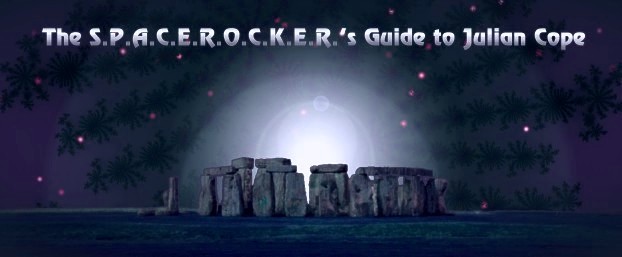

From Aural Innovations #23 (April 2003)
For those who have even heard of him, Julian Cope is not normally a musician you think of when you think of space rock. After all, Cope made his biggest marks in the post punk era of the early 80’s with The Teardrop Explodes, and as an oddball alt-rocker in the late 80’s with his huge FM radio hit World Shut Your Mouth. For many, Julian Cope was last heard in 1991 with his critically acclaimed and very successful double album, Peggy Suicide. After that, Cope wandered off the mainstream map and into obscurity.
But he never stopped recording. In fact, with Peggy Suicide, Cope had laid the groundwork for a complete makeover that would take him into the most creative years of his career, from 1991 till the present (and hopefully beyond). Whether with The Teardrop Explodes or as a solo alt-rocker, Cope’s eccentricity and interest in Krautrock always gave his music a bit of a psychedelic edge. Peggy Suicide, while still catering to the alt-rock market, showed the first signs that Julian was onto something different; that he was beginning to shed the skin of the past and to re-create himself. Injecting moments of sound collage, strange funk experiments, and flashes of electronic and folk influences, it was clear that Cope was working on distancing himself from his post punk image. Exploring issues of sex, religion, ecology, and social collapse, Cope was also defining the themes that would prevail through his music for the next decade. Peggy Suicide generated two hit singles, in the form of the bouncy psychedelic romp, Beautiful Love and the hard-edged and funky East Easy Rider. It wasn’t the last time that one of his singles would chart, but it was the last one that would consciously do so.
Certainly pleased by the success of Peggy Suicide, Island Records no doubt hoped that Cope would record a sequel. The following year, in 1992, Cope did indeed do that, though the execs at Island probably failed to recognize it. Nevertheless, they issued the sprawling, and to some, offensively titled Jehovahkill to an unsuspecting alt-rock market, which immediately rejected it. What was, in retrospect, Cope’s magnum opus, fell off the face of the earth with barely any notice at all. Island and Cope parted ways after Jehovahkill, but the Drude known as Julian Cope was only beginning.
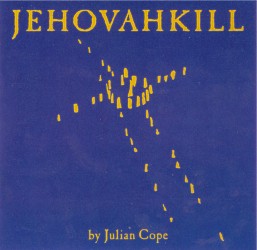 Jehovahkill (Island Records 1992, IMCD 189 (514 052-2)
Jehovahkill (Island Records 1992, IMCD 189 (514 052-2)
Jehovahkill was an astonishing achievement, and was the first of Julian’s albums to bring his more esoteric interests, both musically and lyrically, to the forefront, rather than just hinting at them as in previous albums. Among the musical influences are psychedelic rock, blues, folk, and a healthy dose of Krautrock. Lyrically, Cope built on the themes he began with Peggy Suicide, focusing this time on the megalithic monuments that are scattered throughout Britain and Europe (a fascination that would culminate in his writing of The Modern Antiquarian, and wide ranging popular book on megalithic monuments praised by critics, historians, and archaeologists), relating them to the clash between Christianity and Paganism, social and gender conflicts, the ills of modern society, ecology, and extraterrestrial contact. The Krautrock influences manifested themselves most strongly in two instrumentals, the blistering Necropolis and the rhythmic and spacey Subtle Energies Commission. Cope also blended Krautrock-like freakouts with tribal dance rhythms on the amazing Poet is Priest, which also featured the acoustic astronomy of then very hip Dr. Fiorella Terenzi. On the song front, he offered up some of his strongest material to date, such as the acoustic Soul Desert, and the humorous, self-deprecating (and self-titled!) Julian H. Cope. The lovely Akhenaten was a raw and surprisingly melodic personal reflection that summed up one of the primary themes of the album, that of Julian’s former “fear of the cross” and his ultimate realization that the image of the cross was important in ancient religions long before it was subsumed by Christianity. He invokes the ancient practice of standing in the shape of a cross, arms outstretched, accepting creation (the cover of Jehovahkill depicts the outline of the Standing Stones of Callanish, in the outer Hebrides, which were built in the shape of a Celtic cross 3000 years before the Christian Era). Another of my favorite tracks on the album is Upwards at 45, a brilliantly intense and slowly building psychedelic rocker about alien contact. The album finishes off with the extraordinary 10-minute long The Tower, a moody, emotional, and powerful bit of musical story telling of the fall of the Goddess and rise of the male patriarchy from the point of view of a confused man who is out of place and time.
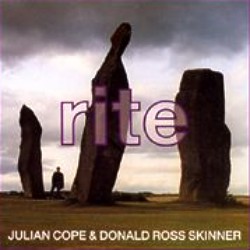 Rite (Kak 1993, out of print)
Rite (Kak 1993, out of print)
After Jehovahkill, the people at Island must have been shaking their heads at the total lack of commerciality that Cope’s musical direction was taking. Julian parted ways with his label and hooked up with Kak for his next release, 1993’s Rite (now, sadly, out of print). Free from any constraints of commerciality, he recorded the first in a series of lengthy, mostly instrumental jamming freakouts influenced by both Krautrock and psychedelic funk. The Indians Worship Him, But He Hurries On, was a mesmerizing guitar and piano meditation, while Amethysteria was a stomping, symphonic workout. Cherhill Down on the other hand, was a pure, flat out funky jam. The album closed with the stripped down noise freakouts and tribal beats of In Search of Ancient Astronomies. Julian does say he intends to re-release Rite at some point as part of boxed set with the two other disks in this series.
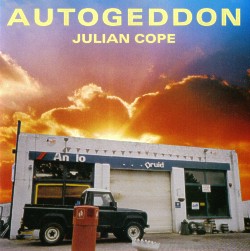 Autogeddon (American Recordings 1994, 9 45705-2)
Autogeddon (American Recordings 1994, 9 45705-2)
With that out of his system (for the time being!), Cope returned to more song based material, with 1994’s Autogeddon. He once again delved into the same themes he began to cover on Peggy Suicide, and continued to explore on Jehovahkill, but this time he used the automobile as a metaphor for his frustrations and ruminations. Musically, he began to stretch out even more. The songs were less structured than any he’d ever written, still drawing on psychedelic, folk, and Krautrock influences, but this time also incorporating outright space rock into the mix. The awe and wonder of Jehovahkill gives way to an angrier album on Autogeddon, as Julian rages against the gas guzzling symbols of male ego and dominance, not to mention the pollution that is destroying the environment. He especially expresses his frustration at his own need for a car in Ain’t No Getting’ Round Getting’ Round. The spacey acoustically based title track, and the oxymoronically mellow Floydian-like Mad Max are both apocalyptic visions of the highway. The 8 ˝-minute Paranormal in the West Country is in three parts: the minimalist bluesy strut and vocal wah-wah’s of Paranormal Pt. 1 (which was apparently recorded in the West Kennet Longbarrow in Wiltshire), the music hall psychedelia of Archdrude’s Roadtrip, and the wild and dissonant Krautrock freakout of Kar-ma-kanik. The album closes with the nearly instrumental 11 ˝-minute s.t.a.r.c.a.r., a pure and edgy space rock excursion with some truly amazing guitar that, like some reverent space ritual, effectively conjures up the ghosts of Jimi Hendrix and Eddie Hazel.
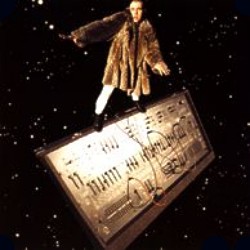 Queen Elizabeth - “s/t” (Echo Special Projects 1994, echo2)
Queen Elizabeth - “s/t” (Echo Special Projects 1994, echo2)
The same year saw the release of the first CD of Cope’s side project with collaborator Tim Lewis aka Thighpaulsandra (who has also worked on and off with hardcore electronic artists Coil and space rockers Spiritualized). The project was called Queen Elizabeth, and was certainly Cope’s most cosmic outing to date. Taking their cue from Todd Rundgren’s epic but unfocussed endeavour Treatise on Cosmic Fire (from his 1975 album Initiation) they crafted an album that comprised just two 30 + minute mostly electronic ambient compositions, utilizing both modern and vintage instruments. This is one of the few of Julian’s albums I haven’t actually heard, though I have listened quite a lot to its 1997 follow-up, which I’ll cover later in the article.
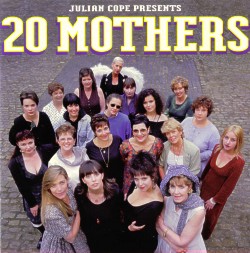 20 Mothers (Echo Special Projects 1995, echo5)
20 Mothers (Echo Special Projects 1995, echo5)
Cope returned to his more song-oriented work for 1995’s sprawling 20 Mothers album. This was and remains the most eclectic and varied album in his discography. Considering that, it was a remarkably strong if somewhat unfocussed effort. It also included Cope’s last entry into the charts with the U.K. Top 40 single, Try, Try, Try. On 20 Mothers, Cope tried everything from spacey psychedelic balladry to gentle folk to flat out rock n’ roll to Euro-electropop. Lyrically, he continued to pursue many of the same themes as he had on his albums since Peggy Suicide: megalithic monuments on the wasted, folksy Stone Circles n’ You, sex and the Mother Goddess on the Beatles-like I Wondered Lonely as a Cloud, enlightenment and gnosis on the punkish rocker By the Light of the Silbury Moon, and the automobile defined landscape in Adam and Eve Hit the Road. But this time out he threw in a lot more personal material too. On the Syd Barrett-like Wheelbarrow Man, he sang with delirious joy about re-establishing contact with his estranged brother, on Senile Get, he talked openly about his frustrations in dealing with his wife’s aging grandmother, and the Kraftwerkish instrumental Leli B. is dedicated to his mother-in-law. At times, 20 Mothers tends to buckle under the weight of its own eclecticism, and not every song is as strong as it could be, and for that reason it’s not necessarily one of my favorite Cope releases, but there’s still plenty on it to enjoy
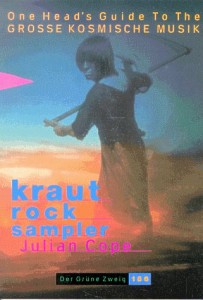 Krautrocksampler
Krautrocksampler
1995 also saw the publishing of Krautrocksampler, Cope’s exhaustive and eccentric book on the German kosmische musik scene of the late 60’s and 70’s. Defining Krautrock in his own way as, “...what Punk would have been if Johnny Rotten alone had been in charge-a kind of Pagan Freakout LSD Explore-the-god-in-you-by-working-the-animal-in-you Gnostic Odyssey. A sort of very fit Hawkwind without the Doomsday Science-Fiction.” From that starting point, Cope covers the history and development of the genre, then goes through his top 50 Krautrockers. Sadly, the book is out of print now, and Cope feels that it remains a period piece, written before the Krautrock revival. He’s tired of complaints that it’s now outdated, and has no plans to revise or re-publish it. Occasionally, copies of it show up on e-Bay if you’re looking for it, though. Faust have excerpted the section on themselves on their own web site, if you want an idea of what Cope’s writing style is like. You can read it here:
http://www.faust-pages.com/publications/cope.krautrocksampler.html
 Interpreter (Cooking Vinyl 1996, CKV 9007)
Interpreter (Cooking Vinyl 1996, CKV 9007)
Julian followed 20 Mothers, musically, with another set of psychedelic pop rock. He decided to keep it more focused this time, and came up with a winner. Cope had allowed his humor to creep into his works here and there, but never so much as on Interpreter. Though far from a comedy album, Julian still seemed more relaxed and comfortable with himself than ever before, and his humor infused the album with a fresh and vital energy that got his ideas across probably better than if he’d done it all seriously. The album was upbeat, with pop hooks aplenty, string arrangements by Thighpaulsandra, and many inventive and psychedelic touches, from the catchy, spacetastic rock n’ roll opener of I Come From Another Planet, Baby to the delightfully quirky tale of encountering the Mothership on the Marlborough downs in The Love Boat. He took a poke at the poseurs on the hyper-charged Farfisa workout Cheap New Age Fix, communed with the Goddess on Planetary Sit-In, and addressed serious environmental concerns on the prog pop “mini-epic” The Battle for the Trees. Thighpaulsandra contributed a great 60’s organ solo to Since I Lost My Head, It’s Awl-Right, and guest vocalist Lynn Davies sang a wonderfully over-the-top operatic vocal amdist the whooshing synths and wailing theremins of the space rock anthem S.P.A.C.E.R.O.C.K. With Me. There was the occasional weak song, such as the somewhat bland Re-Directed Male, but overall Interpreter, with its lavish packaging including a fold out “mythological mind map” of the Marlborough Downs (an area in England with numerous megalithic sites) was one of Julian’s best “song-oriented” albums ever. It was also to be his last foray into the pop realms to date. On his next release, he would return to extended, tripped out instrumentals in a sequel to his 1993 album, Rite.
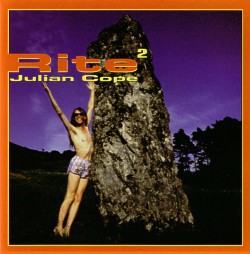 Rite2 (Head Heritage 1997, HH1)
Rite2 (Head Heritage 1997, HH1)
For the first release on his own Head Heritage label, Julian delved deep into his love of Krautrock in what could almost be considered a tribute album to artists like Amon Duül II and Tangerine Dream, albeit through original compositions. Employing a wide range of vintage instruments like the classic Mellotron, Hammond B3 Organ, ARP 2600 synthesizer, and tone generators, along with the guitars, Cope and Thighpaulsandra cut loose on 4 mostly instrumental freak-outs. The spacey 11-minute Ver moves along to an easy-going cosmic groove with chanted vocals, till the pulsing synths start working overtime, taking the piece into stellar symphonic realms. The low-key funky guitar of the 15 ˝-minute Hill of Odin floats on a much quieter groove for a definitely understated experience, especially when set against the album’s centrepiece, the 20-minute pure electronic psych out of D. c.o.m.p.o.s.e.r., a sequence driven dream space odyssey in the tradition of classic Tangerine Dream and Klaus Schulze. The 9 ˝-minute Ringed Hills of Ver brings things to a conclusion with a moody psychedelic jam of phased drone guitars, cosmic effects, and freaky organ.
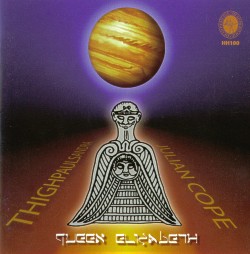 Queen Elizabeth - “Elizabeth Vagina” (Head Heritage 1997, HH100)
Queen Elizabeth - “Elizabeth Vagina” (Head Heritage 1997, HH100)
That same year, Cope and Thighpaulsandra produced their second outing under the Queen Elizabeth side project moniker. With only one of the five compositions on the double CD effort clocking in at under 20-minutes, Elizabeth Vagina is a gigantic expedition into far out cosmic ambient realms. Eisteddfod 69 sets the tone, with hypnotic pulsing deep space drones, massively moody Mellotron, echoed percussive hits, and long, mournful horn blasts. Tal-y-Fan totally surprises though, opening with a wild, percussive jam and tons of whooshing space synths before settling into a more meditative, but still quite extra-terrestrial space. The 32-minute Callanish is all about ancient impressions. As it passes through five interconnected parts we hear moaning synths, strange percussion and chimes, chanting voices, soft Spanish guitar, flute like-melodies, faint rustling and creaking sounds, all building to something sounding like the early Tangerine Dream experiments of their first few albums. And that’s all on the first disk. Disk 2 of the set doesn’t fare quite as well but is still appealing…it’s a little more minimal in its approach and it takes a little getting used to, though. Temples of Ker starts off with a strange little cosmic melody before sinking into a minimalist riff that takes the listener through most of the rest of the piece till it, oddly, shifts into a beautiful keyboard and acoustic guitar melody to finish things off. The massive, 47-minute long The Dianaver starts with a dreamy cosmic space melody, and then veers sharply off into hushed, otherworldly atmospheres. Sometimes it gets so quiet that I thought there were gaps of silence lasting two or three minutes, but with a good set of headphones on, you can hear that there’s always something happening. This one’s definitely for laying back in the dark and letting it take you away, and fans of truly cosmic music will certainly freak over this entire album.
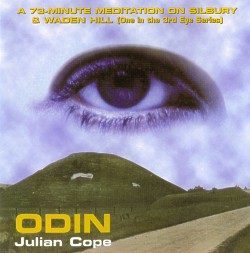 Odin (Head Heritage 1999, HH6)
Odin (Head Heritage 1999, HH6)
If Elizabeth Vagina pushed the envelope for incredibly long songs, 1999’s Odin embraced the concept full on. Consisting of just one 73-minute long track called Breath of Odin, it’s what Julian referred to as “a simultaneously-synthesized parallel-harmonic Breathing Meditation”. Combining a deep shifting layer of Mellotron and Starchamber sonics with an ongoing vocal mantra, this is one deeply experiential piece. At times, in the earlier parts, the vocal mantra sounds like one of David Hykes old Harmonic Choir albums, but later, it blends in deeply with the electronic parts, becoming almost indistinguishable from them. Near the end of the piece it morphs again into a distant, haunting, chant-like melody. Breath of Odin can be soothing, startling, lulling, colorful, meditative, boring, trippy, beautiful, eerie, frustrating, dreamy, joyous, or any combination of these things, depending on your mood. It’s not for everyone, and certainly not the place to start with Julian’s music, but it is actually his own personal favorite, and he says he listens to it almost everyday. Julian’s fascination with Odin, which had cropped up first in one of the titles on the Rite2 release would continue, including a presentation he gave at The British Museum over two nights in October 2001, called Discover Odin. He released a limited edition companion CD for this in 2001 which I haven’t heard yet, but it included not only a few new pieces of music, but also poems and spoken word.
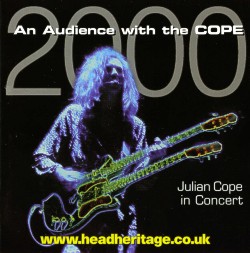 An Audience With the Cope 2000 (Head Heritage 2000, HH10)
An Audience With the Cope 2000 (Head Heritage 2000, HH10)
After three releases of tripped out head music, Cope returned to rock, but with heavy Krautrock influences on this one. Originally released as a “Souvenir CD Concert Programme” for his Autumn 2000 tour, there’s oddly no information included about the tour in the CD. On the album cover, it proclaims “Julian Cope in Concert” and “20 Years of Rock ‘n Roll Stories” but this is neither a live album, nor a retrospective of Cope's career. At least one of the tracks, The Glam Dicenn was originally intended for a project called Citizen Cain’d, which has yet to materialize. The Glam Dicenn, a millennial celebration of ancient British mysticism, spaceships, dancing, and rock n’ roll actually comprises a good chunk of this album, being a 26-minute epic broken down into two parts that frame the album. The first 10-minute part opens with a simple wah-wah'ed guitar and processed vocals before kicking into a thumping guitar-rock freak-out with washes of synth and Mellotron, and a pounding pedal tympani. Between that and the end, we get the electronic psychedelic pop of Holy Mother of God, the rock n’ roll rave up of Born to Breed, and the cosmic space textures and crunching guitars of the fantastic instrumental Krautrock workout Ill Informer. The final 16-minutes of The Glam Dicenn features dreamy synthesizer, spaced-out electronics, and ambient mellowness, reminiscent of early Tangerine Dream, all building to a grand finale. The album was re-released the following year as An Audience With the Cope 2001, with different artwork, but it was the same album, musically, as the 2000 version.
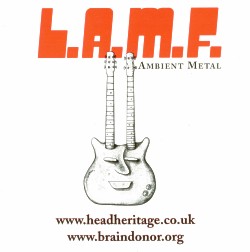 L.A.M.F. - “Ambient Metal” (Head Heritage 2001, HH11)
L.A.M.F. - “Ambient Metal” (Head Heritage 2001, HH11)
2001 saw Julian turning his interests towards a definitely heavier sound with two side projects, L.A.M.F and Brain Donor. Even though both bands were essentially comprised of the same individuals (members of Spiritualized, along with Thighpaulsandra), both projects had a distinctly different feel. Ambient Metal was a totally instrumental heavy metal freakout from beginning to end. Kicking things off is the short, surrealistic soundscape of Yggdrasil, with its ominously ringing bell and a truly primordial sounding guitar lick cutting through the mists of the ancient past. Like a Motherfucker features an ominous, heavy descending bass riff and a haze of metal guitar soloing, that all takes on a definitely menacing tone as walls of Mellotron chorus flood into it in the last third. The 17-minute The Neolithic Goddess is like Acid Mother’s Temple doing metal, starting off slow and menacing and building layers of guitar and drums and Thighpaulsandra’s pulsing, murmuring, gushing electronics. Whole Lotta Loki is 70’s rock n’ roll excess gloriously personified in a heavy bluesy freak-out of wailing guitars and throbbing bass that dissolves into a psychedelic space stew towards the end. After a brief reprisal of the Yggdrasil theme that opened the album, Extasis - Beyond Rome burns up the air in a deeply acidic stoner sludgefest of sound. Ending things off is the 23-minute instru-metal epic-are you ready for this-The Death of the Motherculture at Mona Mam Gymru, the Wailing Shamanic Fury of the Hoeurs and Druids, and the Coming of the Romans. As suggested by that title, this track has three interconnected parts, the first a raging, distorted guitar solo that slowly forms into the riff of the second part, as it’s joined by Mellotron choirs, and weird, wordless vocal chants and screams and what sounds like some prehistoric horn blaring away in the background. The piece finally breaks out into a massive heavy metal stomp, with Thighpaulsandra’s synths whooshing and roaring through the pounding rock n’ roll. In the liner notes, Julian lists numerous “Shamanic Listening Aids”, among them Krautrock classics by Ash Ra Temple, Klaus Schultze, and Cluster, some Acid Mothers Temple albums, and stuff by Miles Davis, Far East Family Band and others. Presumably, these were some of the inspirations for Ambient Metal.
 Brain Donor - “Love, Peace, and Fuck” (Impresario 2001, IMPODDCD001)
Brain Donor - “Love, Peace, and Fuck” (Impresario 2001, IMPODDCD001)
Brain Donor pared L.A.M.F. down to the trio of Julian on bass and vocals, Doggen on guitar and Kevlar on drums (with Thighpaulsandra producing and throwing in a bit of synth work). Love, Peace, and Fuck is a straight-ahead, balls to the wall rock n’ roll album in the tradition of the Detroit proto punk bands MC5 and the Stooges. But Julian can’t resist throwing in a few other odd influences into the mix, including his beloved Krautrock, some classic punk touches, glam (just check out that eye searing cover!) and even a dose of progressive rock. The riffing is intense and creative throughout, whether it’s in catchy shorter songs like the terrific Get Off Your Pretty Face and the humorous Hairy Music, or on longer tracks, like the Black Sabbath meets prog rock of Odin’s Gift to His Mother or the final 20-minute jam of She’s Gotta Have It. While there’s not as much weirdness here as on some of Cope’s other albums, this is still a pleasure to listen to just for the sheer energy of it all. Very recently, Julian has put out another Brain Donor album, Too Freud to Rock n’ Roll, Too Jung to Die, a double CD collection of studio out takes and live tracks from the Brain Donor trio.
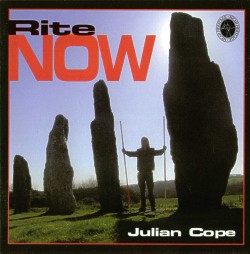 2002 Rite Now (Head Heritage 2002, HH13)
2002 Rite Now (Head Heritage 2002, HH13)
At last, we reach almost the present, and Julian’s latest release (besides the recently issued Brain Donor outtakes), the third in the Rite series, Rite Now. The album comprises four “meditational funk-a-thons”, as Cope refers to them, combining the spirit of Sly and the Family Stone’s There’s a Riot Goin’ On and James Brown’s The Payback with Krautrock rhythms and freaky electronics. This album is all about the groove, and the groove is fast and funky, especially on the 21 ˝ - minute opener, Twilight of the Motherfuckers, drenched in wah-wahed guitar and space effects. Give the Poet Some starts off with a gorgeous symphonic Mellotron opening, and spoken words concerning a certain very special ape from long, long ago, before it all blasts into another funky jam, complete with analog synth noodling courtesy of Thighpaulsandra. Supernatural Agencies is a hyper-jam, with totally crazy fretwork from Doggen, spiralling out of control as the band funks out and Julian sings doo-doo-doots in a soul inspired voice. Ephaedra brings the proceedings to a close with, dare I say it, yet another 20-minute jam, this one sounding like James Brown meets Amon Duül II, together taking off in the mothership for the cosmic trip of their lives. Heady, intoxicating stuff, through and through. It’s a mindblast!
Well, there you have it. If you haven’t checked Cope out since his alt-rock masterwork Peggy Suicide, it might just be time to check him out once again. There’s something in his discography to please just about every kind of space rocker out there. Dig in and enjoy!
Be sure to visit Julian Cope’s Head Heritage web site, for tons of info on Julian, his entire discography with samples, his rants and raves on just about everything, not to mention plenty of his own uniquely styled album reviews of some of the most obscure and never heard of before space rock and related bands.
It can found at: http://www.headheritage.co.uk.